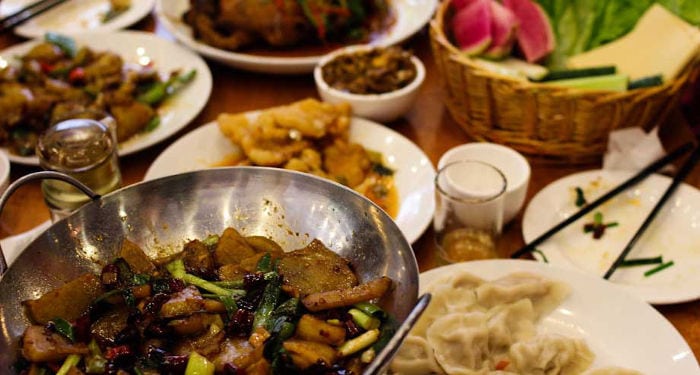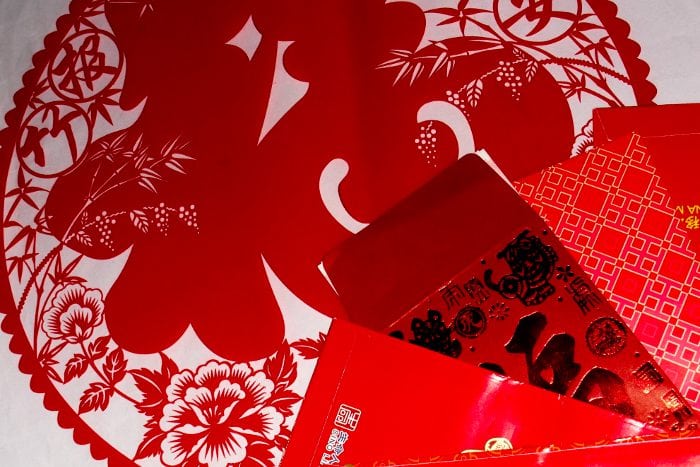
“Sik zo faan mei aa?” (“have you already eaten today?”, 食咗飯未呀) is a common greeting, comparable to our “hey, how’s it going?”, in Hong Kong as in all of China (in Mandarin they say “chi fan le ma?, 吃饭了吗”, the version above is in Cantonese). Therefore it’s no surprise to learn, even in little everyday things, how important food is in the local culture.
It appears that the unfailing Confucius, asked by the ruler of the of the ancient state of Wei, Yuan Xiang, about the best military tactic, he phlegmatically responded that he had learned to cook rice, prepare meat, and serve vegetables, but nothing having to do with how to win a war.
If you ever receive an invitation to a traditional restaurant, remember Confucius: finding yourself having to face twelve dishes at the same time, from soup – where objects of whose nature cannot be identified in nature are often floating – to noodles (spaghetti), to fish – complete with bones – to chicken legs, passing as something edible – or presumed as such – to stuffed vegetables, it could stifle your appetite and bring you to use actual guerilla warfare tactics to come out alive.
Keep in mind the saying that in Chinese cooking they eat anything with legs that isn’t a table/chair or person, anything that has wings and isn’t a plane, and anything in the water that isn’t a submarine.
The first big obstacle is represented by liquids. Be prepared that they will most likely bring you hot water. Have the good taste to not comment and don’t use the water to wash your hands. Chinese customs on drinks are much different than our own and even when the weather would require a frozen drink, it is absolutely normal to taste scalding hot soup and drink tea at the limit of being burned.
The cup of water is no exception. If your metabolism allows, take advantage of it and you can derive some unforeseen benefits. To avoid looks that range from curious to irritated on the part of the waiters, keep in mind that in China they never take tea with lemon: it is something as inconceivable as it is for us Italians to see foreigners happily eating spaghetti and seafood accompanied with a cappuccino!
Try to use the chopsticks (kuaizi) and spoon in the right way: if you know that you’d be putting yours and your neighbors clothes at risk, ask the waiter to get you a fork and knife. You’ll get a compassionate smile of understanding, but will do fine aside from the nuisance of asking forgiveness for certain damages and staying hungry.
If you feel confident enough using chopsticks, don’t even think about stabbing the food to help you. This gesture is in really bad taste because it brings to mind funeral rites where incense sticks are burned in memory of the deceased.
The table will almost certainly be round (according to the standards of Feng Shui) with a rotating central tray; a great advantage considering that the dishes are always shared, and every table mate is served from the center. It may seem obvious, but remember to turn the plate gently: I’ve seen a few things launched into orbit by overenthusiastic table mates. Try not to confuse the small bowl for food with the one for tea; when you eventually have to pour your drink without the help of the waiters, don’t forget to do the same for your fellow guests.
Etiquette requires that all types of food be put in a bowl rather than the the plate and it is absolutely proper to bring it near your mouth to eat.
With a certain practice you’ll manage to mask your surprise for the noises produced around an Eastern table: The more informal the restaurant, the more intense the cacophony.
If you receive an invitation to someone’s home, don’t underestimate it thinking that it might be less formal than a restaurant. Not at all! It is possible that they’ve hired hosts of waiters and laid out a buffet for double the number of people invited; wine will flow in rivers, and little matters if you drink a vintage port as an aperitif. Your host will show you a truly rare and warm welcome; if they consider you an important person, you’ll have the good fortune to conclude the night showing off in an intense session of karaoke.
Coming to the detail of food, if you’re by nature a traditionalist and conservative never ask what it is; if you’re adventurous let yourself be transported by mysterious names like egg of the hundred days (little different from the ones called thousand years), birds nests, shark feather soup, snake blood, and skewers of bat.
With great displeasure you’ll discover that the Dim Sum (the characteristic ravioli), are only served at lunch or as a snack and are not as widespread as they are in Italian Chinese restaurants.
If you think that these are iconic names given to perpetuate oral traditions tied to local cuisine, I won’t do anything to dissuade you from believing it. “Socratic ignorance” finds in this sense a tangible application.
One last recommendation regarding Chinese fortune cookies: the small, sweet crackers contain pearls of wisdom, distributed at the end of the meal in every self-respecting Chinese restaurant. In the West. Don’t expect to find them in either Hong Kong or China. Simply because they don’t exist here. They’re small Japanese cookies.
At the beginning of the last century a bakery in Kyoto began producing them in San Francisco, California; in view of the public success and the lack of knowledge distinguishing the Japanese from Chinese, during the second world war, complicit in the internment into Japanese prison camps, astute Chinese residents of California took the idea and began spreading their cookies in their restaurants.
If you really can’t help yourself, you can find them in supermarkets that sell Western products under the name “American fortune cookies”.
Greetings from Hong Kong, where it’s already tomorrow.
Photo Credits: Photos by Ginevra Niccolini Serragli



